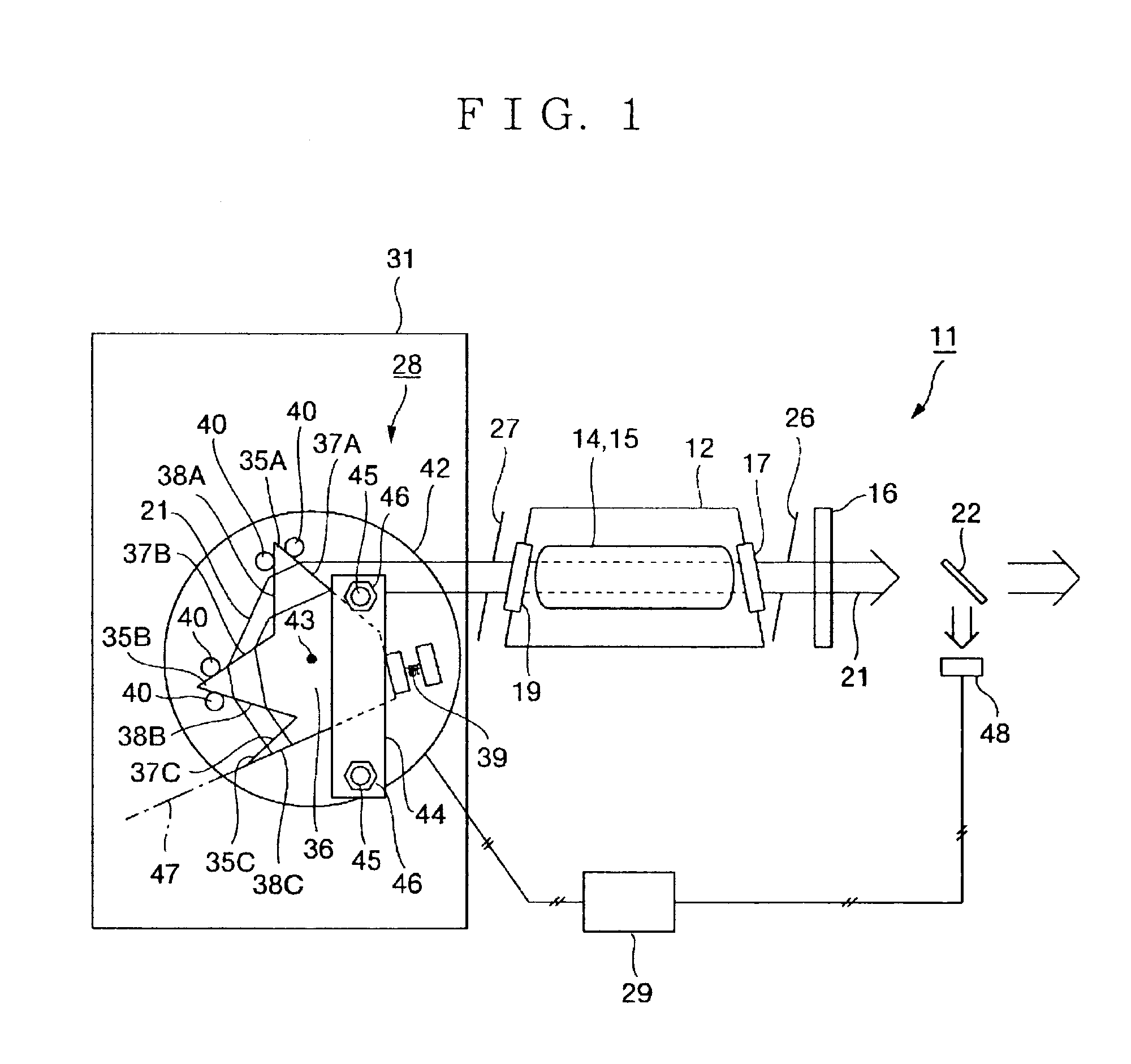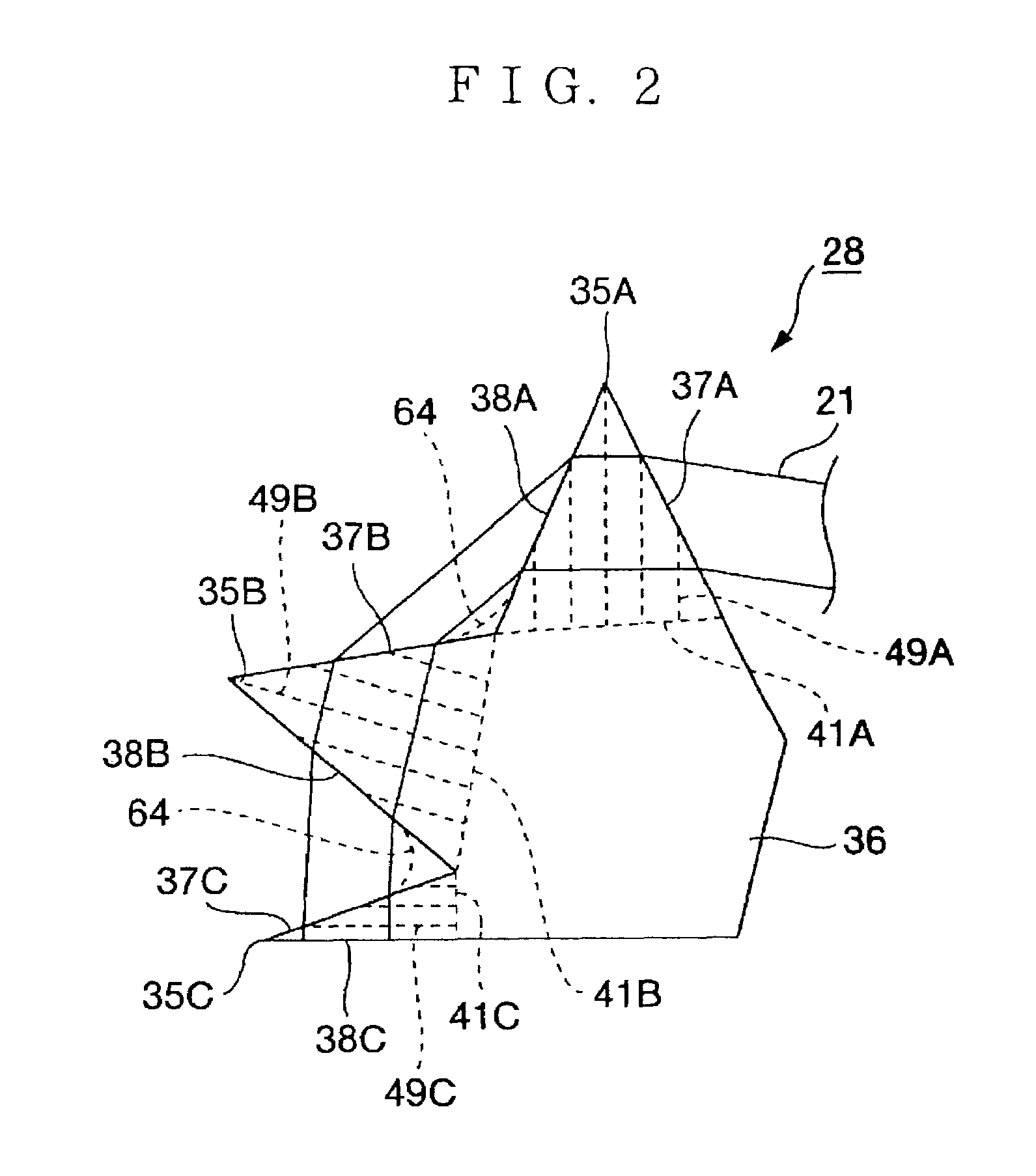Prism unit and laser device
a laser device and prism technology, applied in the field of laser devices, can solve the problems of reducing the diffraction loss, and reducing the output power of the laser light b>21/b>, so as to reduce the diffraction loss, reduce the resonator length of the laser device, and increase the output power of the laser light
- Summary
- Abstract
- Description
- Claims
- Application Information
AI Technical Summary
Benefits of technology
Problems solved by technology
Method used
Image
Examples
first embodiment
[0031]First, a first embodiment will be explained. FIG. 1 shows a block diagram of the molecular fluorine laser device with use of a dispersing prism unit according to the embodiment. In FIG. 1, a molecular fluorine laser device 11 includes a laser chamber 12 in which a laser gas containing fluorine (F2) is sealed. Windows 17 and 19 through which laser light (molecular fluorine laser light) 21 is transmitted are provided at a front and a rear parts of the laser chamber 12.
[0032]Slits 26 and 27 are placed in front of and behind the laser chamber 12. A front mirror 16 which partially transmits the laser light 21 is placed in front of the laser chamber 12. Each of the slits 26 and 27 is formed of metal such as aluminum for the purpose of shielding light. It is desirable that the slits 26 and 27 are each placed by being inclined at an angle of a fixed value or more from the perpendicular (for example, three degrees or more) with respect to an optical axis of the laser light 21 to preven...
third embodiment
[0066]As explained above, coating is not applied to the dispersing prism unit 28, and thereby the third incidence plane 37C forms a front mirror, which partially transmits the laser light 21. As a result, all the components of the laser light 21 generated inside the laser chamber 12 passes through the dispersing prism parts 35A to 35C of the dispersing prism unit 28 before they are emitted.
[0067]Namely, in the first and the second embodiments, only a part of the laser light 21 is transmitted through the front mirror 16 directly from the laser chamber 12 and emitted, and therefore the components which are not band-narrowed sometimes mix into the emitted laser light 21. On the other hand, in the third embodiment, all the laser light 21 passes through the dispersing prism unit 28, where it is band-narrowed, and therefore impure components do not mix into the emission light, and the spectrum purity becomes high. In this situation, coating which partially reflects the laser light 21 may...
PUM
 Login to View More
Login to View More Abstract
Description
Claims
Application Information
 Login to View More
Login to View More - R&D
- Intellectual Property
- Life Sciences
- Materials
- Tech Scout
- Unparalleled Data Quality
- Higher Quality Content
- 60% Fewer Hallucinations
Browse by: Latest US Patents, China's latest patents, Technical Efficacy Thesaurus, Application Domain, Technology Topic, Popular Technical Reports.
© 2025 PatSnap. All rights reserved.Legal|Privacy policy|Modern Slavery Act Transparency Statement|Sitemap|About US| Contact US: help@patsnap.com



